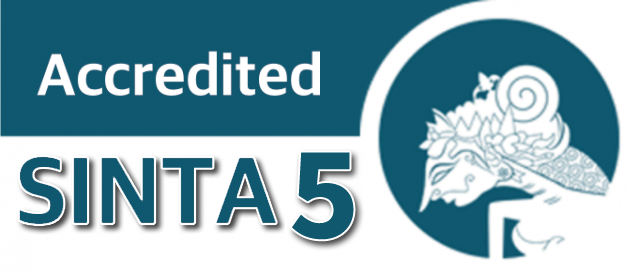JENIS-JENIS JAMUR MAKROSKOPIS KELOMPOK DIVISIO BASIDIOMYCETES DI TAMAN HUTAN RAYA BUKIT BARISAN TONGKOH KABUPATEN KARO SUMATERA UTARA
Abstract
Introduction: Mycology is one of subject Medical Laboratoty Tecnology Study Program..Some of students especially Medical Laboratory TechnologyStudy Program are not familiar with macroscopic fungi. So far, they know about macroscopic fungi from several sources such as:the internet and reserach journals. Add more, mushroom habitat in North Sumatera is very good for its growth, it is worth doing research to determine the types of macroscopic fungi that live and grow in it. Method:The researchmethod used isCruise method.There are two observation stations with 4 point route cruises. The fungal samples found were analyzed by descriptive method (Mueller et al., 2004). Fungal specimens are collected and identified in the field and laboratory. Basidiomycetes identification using several macroscopic fungal identification books like David Arora (1986) dan Simon & Schuster’s (1979)and thesis and journals on macroscopic fungi. Data analysis was done descriptively, the data from the identification results are tabulated and presented in tabular form. Result: Based on the results of research that has been done, obtained 49 types of macroscopic fungi that are included in the Basidiomycetes.Discussion: Macroscopic fungi usually found in hygrophyte habitats are the Basidiomycetes group of fungi. Basidiomycetes found were 5 orders, 17 families and 49 spesies. The most common species of fungi are members of the Order of Agaricales which consists of 29 species and the Order of Aphyllophorales of 15 species. This is because the Agaricales and Aphyllophorales groups have the ability to adapt well compared to other orders. The families that had the highest percentage of species were the Tricholomataceae and Polyporaceae families. This fungus is easy to find because it can grow in various habitats.
References
Alexopoulus, C.J. &C.WMims. (1979). IntroductoryMycology. Third Edition. John Wiley and Sons, Inc. CanadaAnas, I. (1989). Biologi Tanah Dalam Praktek Pusat Antar Universitas Bioteknologi (Forskalk). Bogor Arora, D.(1986). Mushroom Demystified Ten Speed Press.CaliforniaAsnah. (2010). Inventarisasi Jamur Makroskopis di Ekowisata Tangkahan Taman Nasional Gunung Leuser Kabupaten Langkat Sumatera Utara. Tesis Pasca Sarjana Biologi. Medan : Universitas Sumatera UtaraCarlile, M.J. & S.C. Watkitson.(1994). The Fungi. Academy Press.London
Darwis, W. Yuyun, M. Rochmah, S. (2009). Identifikasi Jamur Tricholomataceae dari Hutan dan Sekitar Pajar Bulan. Jurnal Gradien. Vol. 1. Hal. 1-6Dwijoseputro, D.(1978).Pengantar Mikologi. Penerbit Alumni BandungGandjar, I.Sjamsuridzal,W. & Oetari, A(2006).Mikologi Dasar dan Terapan. Yayasan Obor Indonesia. JakartaKartasapoetra, A.G. & Sutedjo, M.M. (2005). Pengantar Ilmu Tanah. Rineka Cipta. Jakarta Mc-Kane, L.(1996). Microbiology Applied and Practice. Mc-Graw Hill Book Company, New YorkMueller,G.M., J.P. Schmit and FG. Bills. (2004). Biodiversity of Fungi (Inventory, Monitoring and Methods) Harvard University.Munir, E.(2006).Pemanfaatan Mikroba dalam Bioremediasi : Suatu Teknologi Alternatif untuk Pelestarian Lingkungan. Pidato Pengukuhan Jabatan Guru Besar Tetap dalam Bidang Mikrobiologi FMIPA USU. USU Repository, MedanNugroho,(2004). Inventarisasi Jamur Makroskopis di Kawasan Taman Wisata Alam Sibolangit Kabupaten Deli Serdang Sumatera Utara. Skripsi Program Studi Biologi FMIPA USU Nurtjahja, K.& R. Widhiastuti (2009).Biodiversitas Cendawan Makroskopik di Taman Wisata Alam Sibolangit dan Sicikeh-cikeh, Sumatera Utara. Prosiding Seminar Nasional Biologi 2011. Departemen Biologi FMIPA USU. MedanPurdy, L.H.(1956). “Factors Affecting Apothecial Formation by Sclerotinia sclerotiorum”. Phytopathology, 46: 409 –410 Rahayu, G.(1994).Biology Cendawan : Fisiologi Cendawan FMIPA IPB BogorRugayah, W & Pratiwi. (2004). Pedoman Pengumpulan Data Keanekaragaman Flora. Pusat Penelitian Biologi LIPI. BogorSantoso.(2004). Biologi dan Kecakapan Hidup. Ganeca Exact. BandungSmith, I.H. & Webber, N.S.(1980).The Mushroom Field Guide. The University of Michigan PressSuhardiman, P. (1995). Jamur Kayu. PenebarSwadaya:Jakarta Suharna, N.(1993). Keberadaan Basidiomycetes di Cagar Alam Bantimurung,Karaenta dan Sekitarnya Maros.Sulawesi Selatan. Balitbang Mikrobiologi. Puslitbang Biologi. LIPI. BogorTampubolon, J.(2010).Inventarisasi Jamur Makroskopis di Kawasan Ekowisata Bukit Lawang Kabupaten Langkat Sumatera Utara. Tesis Program Studi Magister Biologi FMIPA USU. USU Repository. MedanTortora, G.B.S., Funke, I.& Christine, C.C. (2001). Microbiology an Introduction. Benjamin New YorkWallace, R.A., Jack,L.K. & Gerald, P.S. (1986). Biology The Science of Life. Scot, Foresman & Company, New YorkZoberi, M.H.(1972).Tropical Macrofungi The Macmillan Press Ltd. London and Basingstoke












